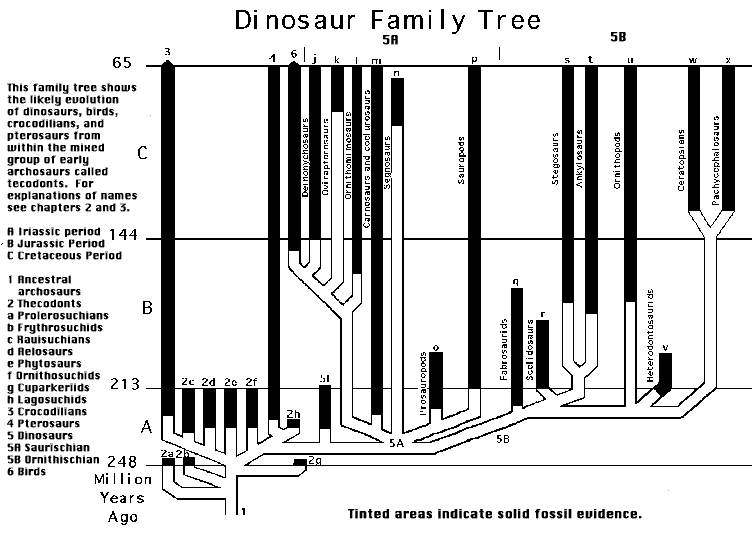An Evening with Creationist Carl Kerby

I have just returned from a very interesting evening at Waldringfield Baptist Church listening to and meeting Carl Kerby. Who he? He's one of the leading young Earth creationists in the world, someone who spends a lot of time spreading his message. Along with arch creationist himself, Ken Ham, he's a co-founder of Answers in Genesis, the people behind the creation 'museum' in Kentucky. It's not every day you get a opportunity to meet someone that disconnected from reality, so I took it.
Why would I, an atheist who, like most Christians, accepts evolution by natural selection with the same degree of certainty that everyone has for the fact that the Earth goes round the sun, chose to spend an evening with someone like that? Because it's always illuminating to go and meet someone with a life outlook so diametrically opposed to one's own. I was particularly keen to see whether he used the techniques of other denialists - by which I mean people who adhere to a way of thinking in the face of overwhelming and consistent evidence that they are plain wrong. There are loads of such groups and they have little or nothing to link them other than their rejection of the kind of facts the world at large has no problem with (a non-exhaustive list includes climate change deniers, HIV causes AIDS deniers, vaccinations cause autism advocates and more). It is that commonality that interests me, not the specifics of the creationst credo which, for the avoidance of any doubt, I regard as utter clap trap. Having met him, I am confident that Mr Kerby won't mind me saying that — he hears it every day.
I was not surprised that Kerby was such an excellent speaker. If the audience had been a little more lively I imagine he'd have had a lot more reaction than he got. He was certainly working hard and is very good at what he does. My understanding of his basic standpoint is that moral authority comes from the Bible which was written down by men on behalf of God. If you waver in your belief about any aspect of the Bible then it all falls apart because the next step is to disbelieve in the virgin birth and then the resurrection and so Christianity comes to an end. Essentially his is the "thin end of the wedge" argument. Since the resurrection is true, therefore everything else in the Bible is true. A tiny minority of Christians believe this, but for that tiny minority, Carl Kerby, and the organisation he co-founded, are standard bearers.
During the talk, Kerby quoted research into when young people start to question the Bible and why only around 12 - 20% of teenagers stick with the church once they are in enough control of their lives to leave it. It showed that youngsters leave the church mentally, if not physically, in their high school years. Those that go to Sunday school are more likely to leave the church than those that don't. That is, the more religion they get as children, the less likely they are to stick with it when they're older (my phraseology).
Why? Because they get taught about things like Noah's Ark through cartoon pictures with monkeys hanging on the side of the rinky-dinky boat with a couple of giraffes up front when in reality (sic) it was a much larger vessel. So, if you show children the cartoon version, that obviously can't match up with the reality so they start to doubt. Reasons the children give for doubting included not thinking that Adam and Eve were real and not believing that the Earth was only thousands of years old. Those questions, answered with "don't ask questions like that in church" lead children to question what they're being told overall and so they leave (there's only so much doubletalk a child can take after all I might add).
As part of this argument Kerby showed a video sequence explaining how all the animals fitted on the ark. Here's how a creationist reconciles the story of Noah's Ark with physics and biology:
- Only talk about land animals and birds, not the aquatic or marine animals.
- Only talk about kinds, not species. For example just 2 dogs were on the ark (dog kind) and from them have come all the dogs we see today.
- Only 2 cats are required - all the living cats we see today are descended from those two and so on.
- As already noted, the boat was bigger than the rinky-dink cartoon we see in Sunday school. Think small ship.
- Work out the average size of a land animal/bird, including everything from dinosaurs to mice and it turns out that the average size for an animal is slightly less than that of a sheep.
Of other living things like insects, plants and fungi — there was not a mention. So really, there's no doubt that everything could have fitted on the Ark with room to spare. And all that diversification - from domestic cat to lion to jaguar - well that's all happened in the last few thousand years with humans right there to watch it.
Stay with me folks, the level of denialism gets more terrifying.
Where did the water come from? Not from rain but from under ground, that's what it says in the Bible apparently. So when that happens you get enormous deposits of mud thrown up from the deep that then fall down to cause chaotic mud deposits (geologists call them turbidites). Such upwellings of mud caused a mass burial of bottom-dwelling creatures as the flood rose from beneath the rocks. And it's no surprise that the highest mountains in the world contain fossils because the flood was truly global. I forget where he said the water went afterwards but it was equally crazy. You only have to raise the bottom of the sea a little and lower the mountains a little and the word can be miles deep in water. Well, that's true of course, but not quite the point I don't think.
Spot the denialist tactic in there? Slip in a technical term like turbidite and use it correctly to show you know more about your subject than most of your audience and then misuse it in the knowledge that they almost certainly won't notice. Acknowledge that the fact that the summit of Everest is made of fossil-rich marine limestone might be a bit of an argument against your crazy theory and dismiss it because all the creatures there are bottom dwellers that got stuck there when the mud erupted from beneath. I'd need to check, but I doubt all the fossilised creatures represented in the limestone at the summit of Everest were bottom dwellers in life. They're certainly very different from those that would be found buried in a turbidite (they're very different ecosystems).

Oh this one's good - the Colorado River doesn't have a delta like the Mississippi River (actually, it does, see above, but it's a shadow of its former self, see wikipedia). Why is this important to creationists? Because if the Colorado River really had carved out the Grand Canyon then it would still be doing it today and it would be carrying masses of material that would have to be dumped when the river met the sea, just like we see in the Mississippi. So that proves that Grand Canyon was created by God, not the river. And in case you were tempted to point out the various dams along the river's length that trap all the silt, Answers in Genesis organises regular trips down to the Grand Canyon so you can see God's work for yourself. Actually that would be fascinating too. Standing in front of ancient river beds, complete with all the evidence of braiding, ripples and what have you, all laid out before you and some bloke saying "no no, that's not what you're seeing at all. This is all God's design…"
During his talk and in his discussions with others afterwards, Kerby explained his take on the age of the Earth. Unlike some of his audience, Kerby knows a lot of about radiometric dating. He knows, for example, that Potassium 40 is radioactive and decays into Argon and that geologists can use the proportion of Potassium 40 and Argon 40 in a rock to calculate its age. As he says, you plug the proportions in to a formula and out comes the age of the rock. His emphasis was on "a formula - you just use a formula and you get the age" (his emphasis, not mine). Sound familiar? To me it sounds like a climate change denier saying "it's all based on a model, it's just a model."
Oh, and water percolates through rock so you don't know how much material has washed in and out of that rock so the proportion can't be relied upon. Well that's true for limestone, yes - water does percolate through it. Sandstone, yes. Sedimentary rocks in general - yes. Granite - no. Not all rocks are porous. Igneous and metamorphic rocks generally are not. I mean there's got to be a reason why springs occur on the boundary between porous and non-porous rocks, no? Also, any geologist will tell you that if you use radiometric dating on, say, a sandstone, what you measure is the age of the individual grains, not the composite rock, i.e. the age of the original rock that weathered into grains of sand.
You have to hear a young Earth creationist say this to believe anyone actually does but I did a few hours ago: another line of argument against the ancient Earth is that we don't know for sure that the same laws of physics applied historically as they do now, nor that they apply equally across the universe today. When I asked someone there this evening (not Carl Kerby) if he thought it possible that light travelled at a different speed in the Andromeda galaxy than here he said "you don't know that it doesn't, you've never been there." I suppressed the urge to laugh and cry at the same time.
What these people reject is Uniformitarianism - which is a pretty fundamental building block of our understanding of the world. It says that the same laws of nature apply across the Universe and always have done. To them it would be perfectly plausible, for example, to suggest that the Moon used to orbit the Earth in 2 weeks, or 3 years or not at all. It's perfectly plausible to suggest that today light slows down when it leaves the solar system, or that the gravitational constant changes when you get to Saturn.
As I expected, there was a lot of talk about fossils. Creationists feel safe when talking about fossils because they think it's the key to disproving evolution by natural selection. No need to get into messy discussions about the speed of time or decaying atoms, this is where we get to missing links and inconclusive evidence. As I pointed out to my fellow visitor, we no more need fossils to prove evolution by natural selection as a fact than we need a flying aeroplane to prove the existence of air pressure (actually I just thought of that line now but I did say that evolution would be a proven fact even if there were not a single fossil anywhere).

Right at the very end of the evening, when I was one of a few people left in the hall and the sound of keys being jangled was all around, I witnessed classic cherry picking. Kerby dug out his laptop and showed some diagrams of evolutionary trees. In each one the diagram highlighted where direct fossil evidence was available and used something like a dotted line to show a relationship for which the fossil evidence is less certain/complete. The diagram above is one of several he showed us (the original is in colour, I can only find this monochrome version on the AiG site and can't find the original elsewhere). The dotted lines/unshaded areas occur where there was greatest speciation, i.e. where one would see the greatest number of transitional fossils. Notice that this period of greatest change lasted about 30 million years, followed by a series of straight lines where there is more of a progression among similar "kinds" with plenty of fossil evidence — periods that lasted for much, much longer periods of time. Think back to the ark story again — creationists do believe that one kind evolves into a diverse range of forms — many cats from one pair of cats etc. It's the evolution of one kind into another that upsets them. They cannot accept that all mammals, reptiles and birds evolved from fish, for example. They have particular problems with the idea that humans evolved from a rat. Well, so do I since we didn't evolve from rats at all. We did however evolve from a mammal about the size of a rat. Again, notice the denialist's tactic of using a perjorative term like rat to emphasise a point. I'm pretty sure Mr Kerby knows that primates didn't evolve from rodents and he was talking figuratively — but the tactic had the desired effect on the audeince.
Everyone around me thought this diagram was proof-positive of the lunacy of evolution. As with all cherry picking of science, what was actually going on here was a misunderstanding, deliberate or otherwise, of what science does and doesn't do.
All dinosaurs share a common trait which (if memory serves) is to do with the way the limbs are attached to the rest of the body. The gap between, say, archaeopterix (which creationists think is a fully-fledged bird) and T. rex is obviously huge so they appear in different lineages in all evolutionary diagrams. Within those lineages there are many species that clearly belong together (e.g. Gigantosaurus is basically a big T. rex). These show as different straight lines on the chart (which Kerby emphasised came from "their literature" — i.e. a science publication). Below the straight lines, where radial speciation separated out the different dinosaur lines, there are the unshaded lines. Is this because there are no fossils from that period? No — it's because the fossils we have are not so easily classified. You see something that looks like a small Apatosuaurus and it's easy to classify it. But intermediates are less easy to place with the kind of certainty needed in a diagram in something like Scientific American. The unshaded lines actually mean something like "we can't be sure where on this diagram many of the fossils from this period would fit so we won't pretend we can place every fossil on here with equal certainty. What is clear from the fossils we have is that all these lineages derive from a common ancestor and the pattern shown is consistent with them."

A creationist believes that the only way to prove evolution would be to have a complete set of fossils of every animal that ever lived. Show a creationist a transitional fossil (of which there are countless examples by the way) and they say "Aha! now there are two gaps in the record - one either side of the fossil you've just shown me." As I mentioned, if there were not a single fossil anywhere, there would be no doubt of the fact of evolution by natural selection.
There is nothing you can say to a creationist that will make them waver. No amount of evidence or logical reason will prevail and actually it would be a rather tiresome conversation. All you can do, all I am trying to do, is to understand the mental process that goes on to make them deny reality so comprehensively.
I'll end with a couple of corkers. More than once during his talk, Kerby asserted that evolution teaches that white men are more advanced than black. I naturally took great exception to this falsehood. He was quoting folk like Darwin and Lyell who grew up in a world where slavery was still practised and the assumption was that Victorian Gentleman, such as themselves, were the very height of civilization. Mr Kerby was keen to show me History Channel videos (i.e. modern evidence) to support his claim that evolution teaches this as well — maybe I should have watched them but I declined which with hindsight makes me look scared of facing his arguments. I pointed out that what evolution teaches is that it never stops. When the white and black races emerged, one didn't stop evolving while the other one continued to 'advance.' All living things are equally, fully, evolved as they have been throughout the history of life on Earth. A spider is not an un-evolved antelope. It's a highly evolved spider.
I'll skim over the stuff about abortion (Kerby's American so he thinks it's an issue) and the stuff about women having to be subservient to men - that's hardly something unique to Christian fundamentalists - and leave you with a line he said early in his talk. He said it quietly, almost as if he realised he shouldn't, but even so, it left me speechless:
We have lost the right to impose our religion on society.
Amen to that.